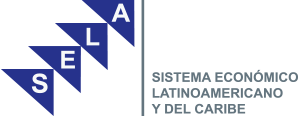FEALAC AIMS TO MOVE EAST ASIA CLOSER TO LATIN AMERICA
14 junio 2013
Fuente: Published by TheJakartaPost.com, Indonesia
Fuente: Published by TheJakartaPost.com, Indonesia
Bali, June 14- As the sixth Ministerial Meeting of the Forum for East Asia and Latin America Cooperation (FEALAC) kicked off in Nusa Dua, Bali, on Thursday, all 34 participating countries shared a similar hope that the forum could better bridge the two regions.
“The East Asia and Latin America regions are both very dynamic and considered as engines of the world’s economy, particularly amid the economic recession in many parts of the world. FEALAC can assist the next major shift in the world’s geopolitics and geoeconomy,” Foreign Minister Marty Natalegawa said after the opening ceremony.
Indonesia and Colombia have been co-chairs of the FEALAC for the last two years. At the end of the Bali meeting, the chairmanship will be handed over to Costa Rica and Thailand.
FEALAC consists of 16 East Asian and 20 Latin American nations. These member states make up 33.43 percent of the world’s GDP, with total trade reaching US$13.14 trillion or 29.82 percent of global trade. About 24 percent of the world’s foreign direct investment (FDI) comes from among FEALAC members.
“We do not want to miss opportunities; as the economies of East Asia and Latin America grow and prosper, our regions need to be linked up better,” Marty added.
Colombian Deputy Foreign Minister Monica Lanzetta Mutis, who represented her country as the other co-chair, shared Marty’s statement.
“FEALAC is also helpful in facing common challenges, such as trade, climate change, investment and the eradication of poverty,” she said in her speech. While the two regions were distant geographically, member states were also faced with the so-called knowledge gap, which had been among the biggest challenges.
“Dealing with the knowledge gap is actually the first thing we should do,” Brazilian Deputy Foreign Minister Maria Edileuza Fontenele Reis said.
Mexican Foreign Minister José Antonio Meade Kuribreña, in an interview with the Post on Thursday, shared Reis’ opinion.
“It was a challenge for some generations in the past but I think it is something that we can now overcome. With greater connectivity and logistics we can work toward a better engagement,” Meade said.
About 49 bilateral meetings between foreign ministers of the participating nations were scheduled on the sidelines of the FEALAC meeting. On Thursday, Marty had three bilateral meetings with South Korea, Argentina and Uruguay.
The meeting with South Korean Foreign Minister Yun Byung-se mainly reiterated commitment to strengthen the two countries’ relationship in commemoration of the 40 years of Indonesia-South Korea diplomatic relationship.
“The two foreign ministers agreed that the two countries’ strategic partnership must be enhanced in the bilateral, regional and global context,” a press statement read.
To date, South Korea is Indonesia’s fourth biggest trading partner and third biggest foreign investor.
In 2012, trade volume between Jakarta and Seoul reached US$ 27.02 billion. South Korean investment last year was $1.94 billion, a significant 55 percent increase from 2011. The Indonesia-Korea Comprehensive Economic Partnership Agreement (IK-CEPA) has provided the opportunity to push for a target of $50 billion of bilateral trade in 2015.
During his meeting with Argentinean Foreign Minister Hector Marcos Timerman, Marty discussed the strengthening of cooperation in several sectors. Marty also suggested that Argentina eases the issuance of visas for Indonesians, particularly businessmen and proposed the implementation of aviation cooperation to enhance connectivity.
Indonesia and Uruguay, meanwhile, agreed to implement a visa-free agreement for diplomatic and service passport holders. The MoU was signed on Thursday afternoon by Foreign Ministry’s director general for America and Europe, Dian Triansyah Djani and Uruguayan Vice Foreign Minister Luis Porto.
Dian Triansyah also expressed appreciation for Uruguay’s eagerness to let 47 Indonesian youngsters have a four-year study in soccer in the Latin American nation.








